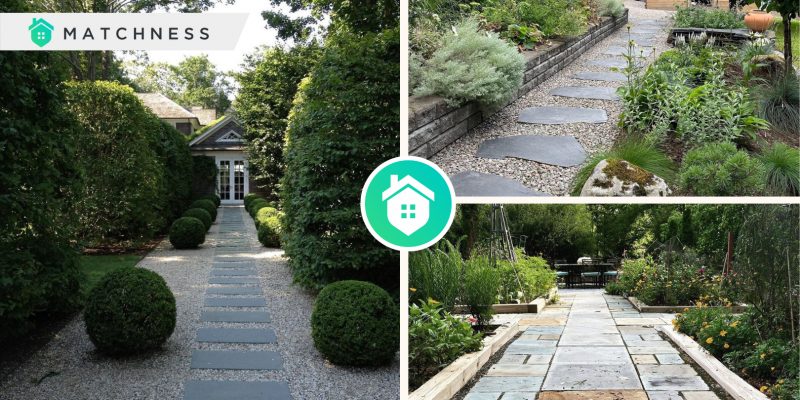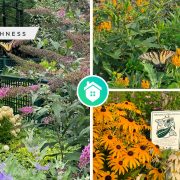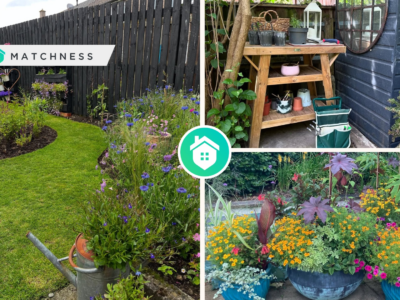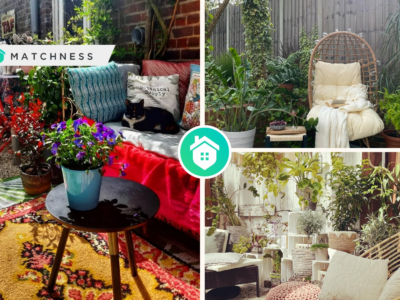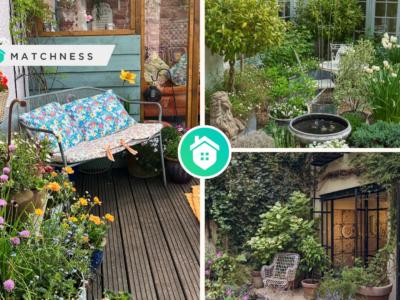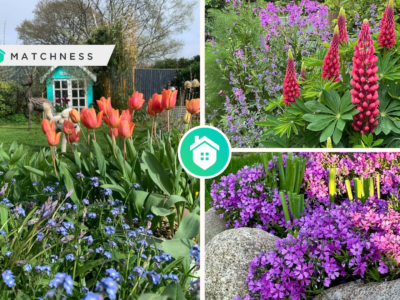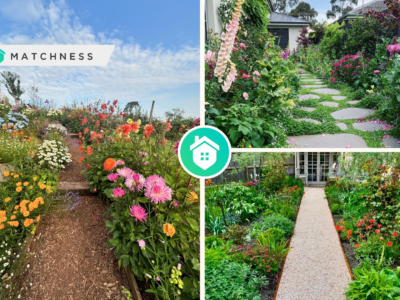Garden pathway landscaping is an essential aspect of creating a visually appealing and functional outdoor space. A well-designed pathway can transform a yard by creating a sense of flow and cohesion. It will guide visitors through the space and highlight key features. By carefully selecting the layout, materials, and decorations around the pathway, the overall aesthetic of the yard can be enhanced. This attention to detail in garden pathway landscaping can truly elevate the overall design of the outdoor space.
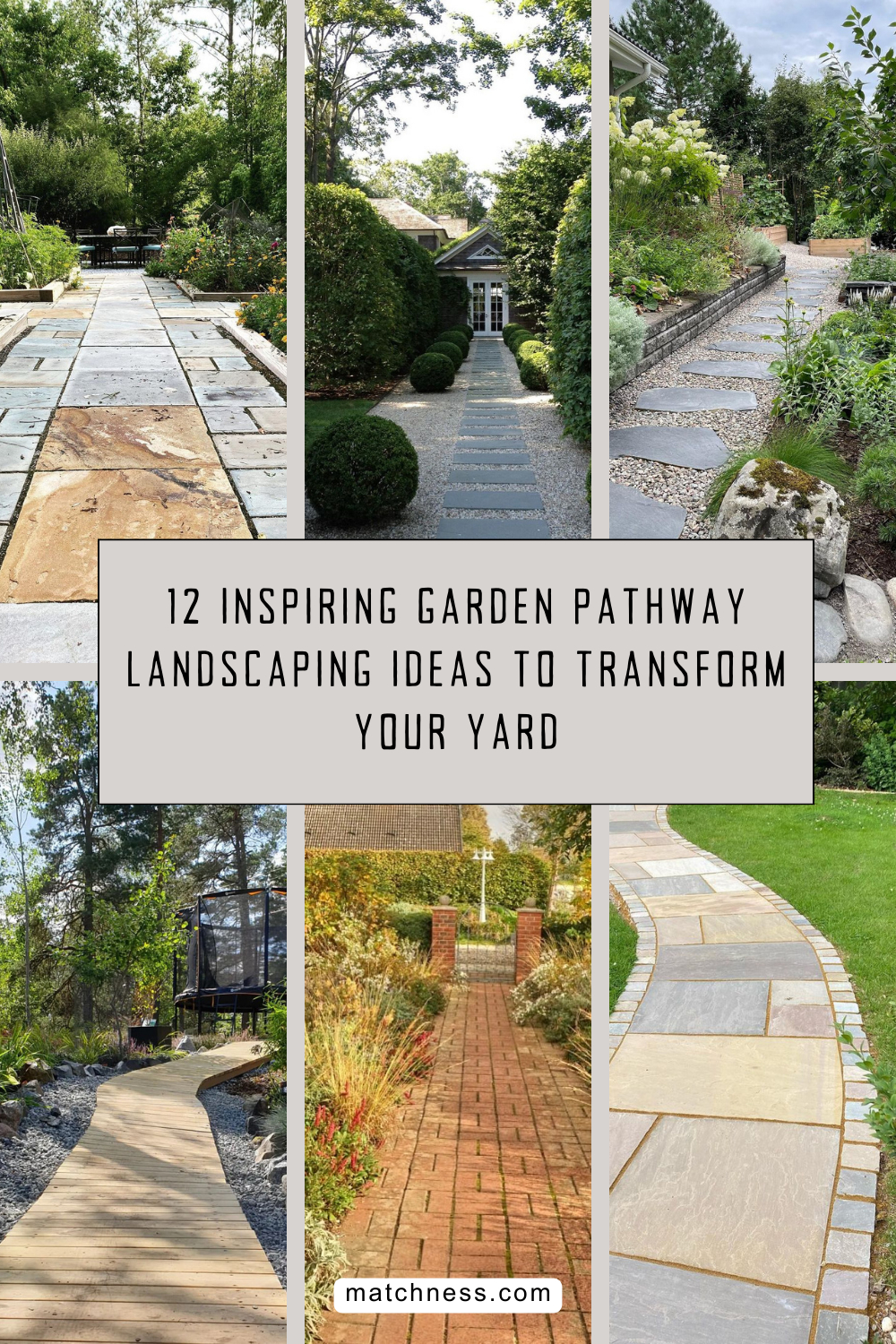
Below, we will delve into the intricacies of garden pathway landscaping, including the look at designs, materials, size, form, planting, lighting, and other factors on the appearance, functionality, and aesthetics of paths. We will also provide some pathway ideas for inspiration.
Garden Path Materials
When designing a garden pathway, thinking about the materials is crucial in order to achieve the desired aesthetic and functionality. Consider factors such as durability, cost, and maintenance requirements to ensure the pathway will withstand the test of time and complement the overall design of the garden. Here are some garden pathway materials.
Natural stone pathways
Natural stone is a pathway material that is durable and low maintenance, making it a popular choice for outdoor spaces. They come in a variety of colors and textures, adding a unique and timeless look to any landscape design.
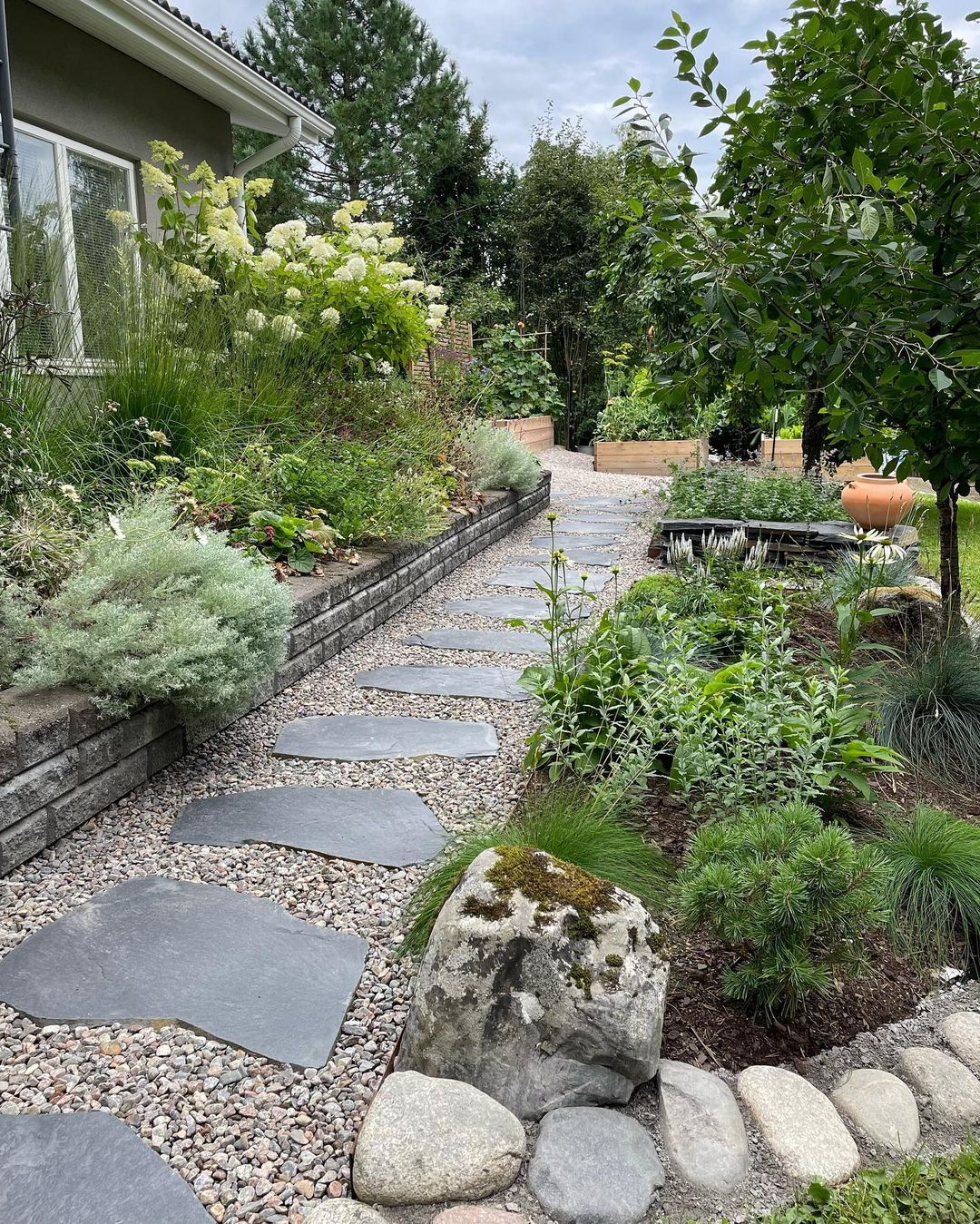
Using stepping stones for the garden pathway materials can add a charming and natural element to your outdoor space. Combined with gravel around the stones, this design choice can create a visually appealing and functional walkway that enhances the overall aesthetic of your garden. They can also help prevent erosion and provide a stable surface for walking. Natural stone paths from @garden_dreams_and_beyond
Paver pathways
Another garden pathway material is pavers. Pavers are commonly used for walkways, patios, and driveways due to their durability and versatility. They come in a variety of shapes, sizes, and colors to complement any outdoor space. Pavers are also known for their ease of installation, making them a popular choice for DIY projects. Additionally, they can easily be replaced if damaged or stained, providing a long-lasting solution for outdoor surfaces.
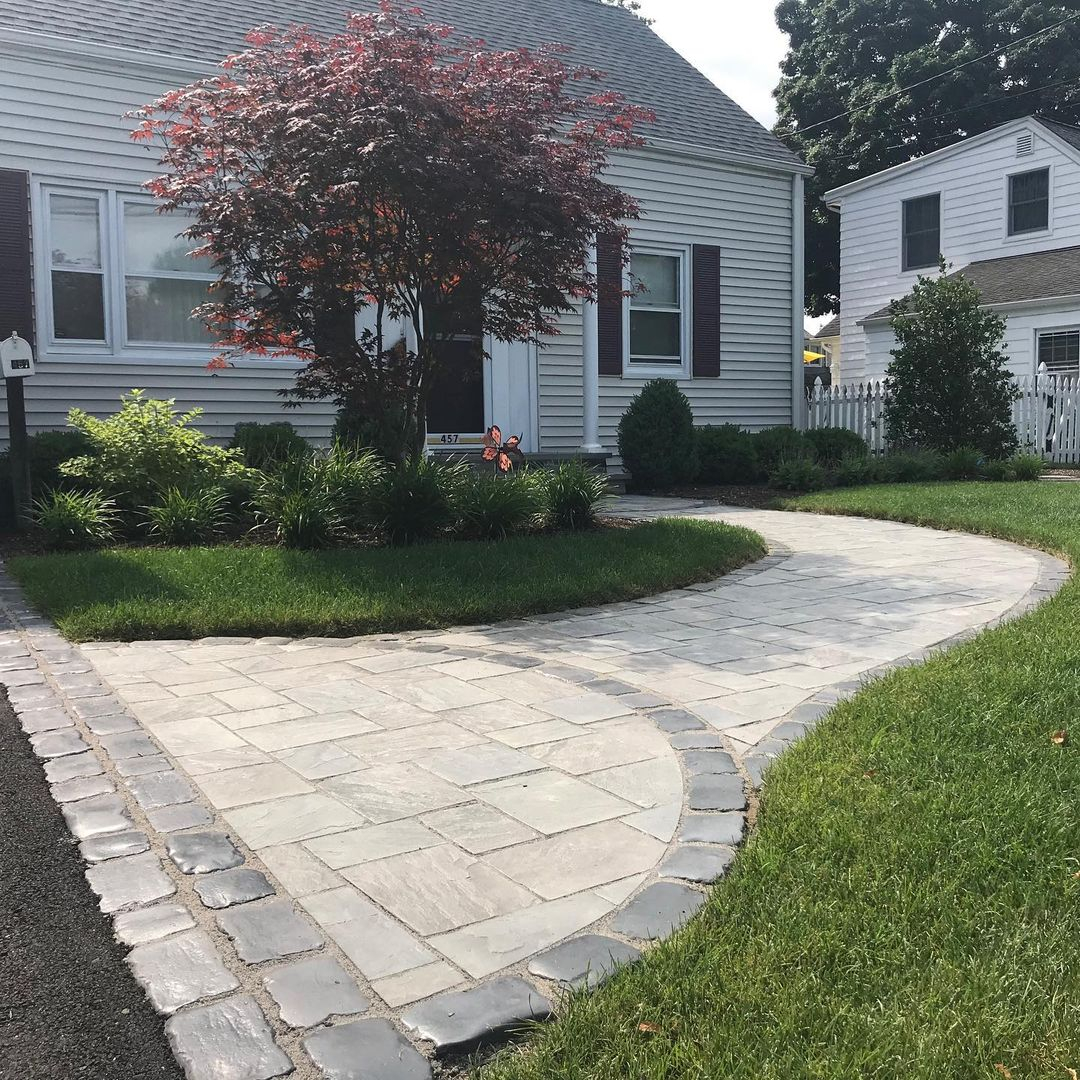
Installing paver paths in a large shape can create a grand entrance to your home or garden. These paths are durable and low maintenance, making them a practical choice for high-traffic areas. Paver pathways from @todelandscape
Gravel pathways
Gravel pathways are a popular choice for gardens and outdoor spaces due to their low maintenance and natural appearance. They provide excellent drainage and are easy to install, making them a practical option for both residential and commercial landscapes.
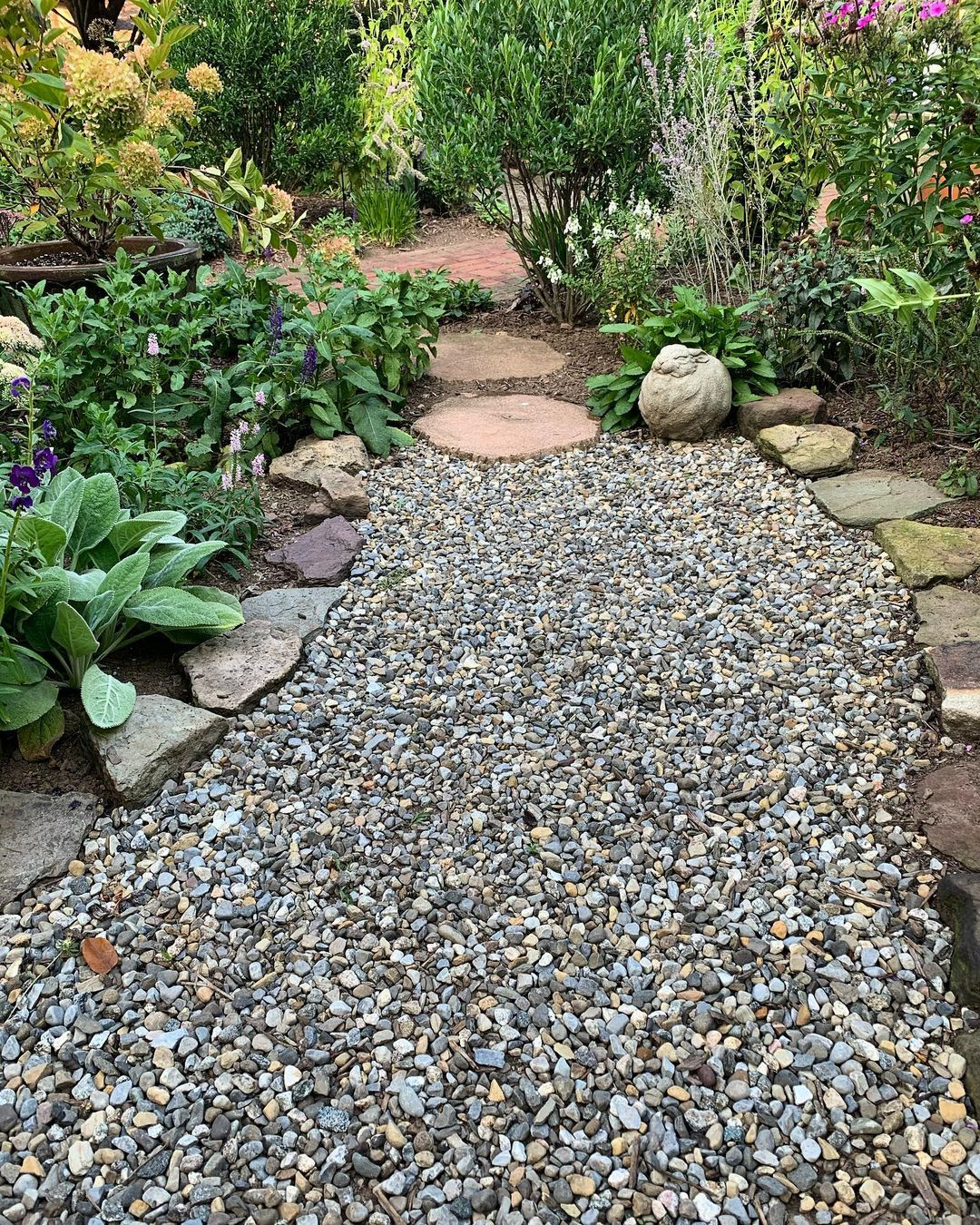
Choosing gravels for the pathway materials is a great option because they are durable and low maintenance. They also provide good drainage for rainwater, preventing puddles from forming on the pathway. Gravel pathways from @elmcottage1916
Wood pathways
If you want a warm and natural look, wood pathways are a great option for your outdoor space. They blend seamlessly with the surrounding environment and provide a comfortable surface to walk on. Wood pathways are also durable and easy to maintain, making them a practical choice for any outdoor setting. Additionally, the natural texture and color variations of wood add character and charm to your landscape.
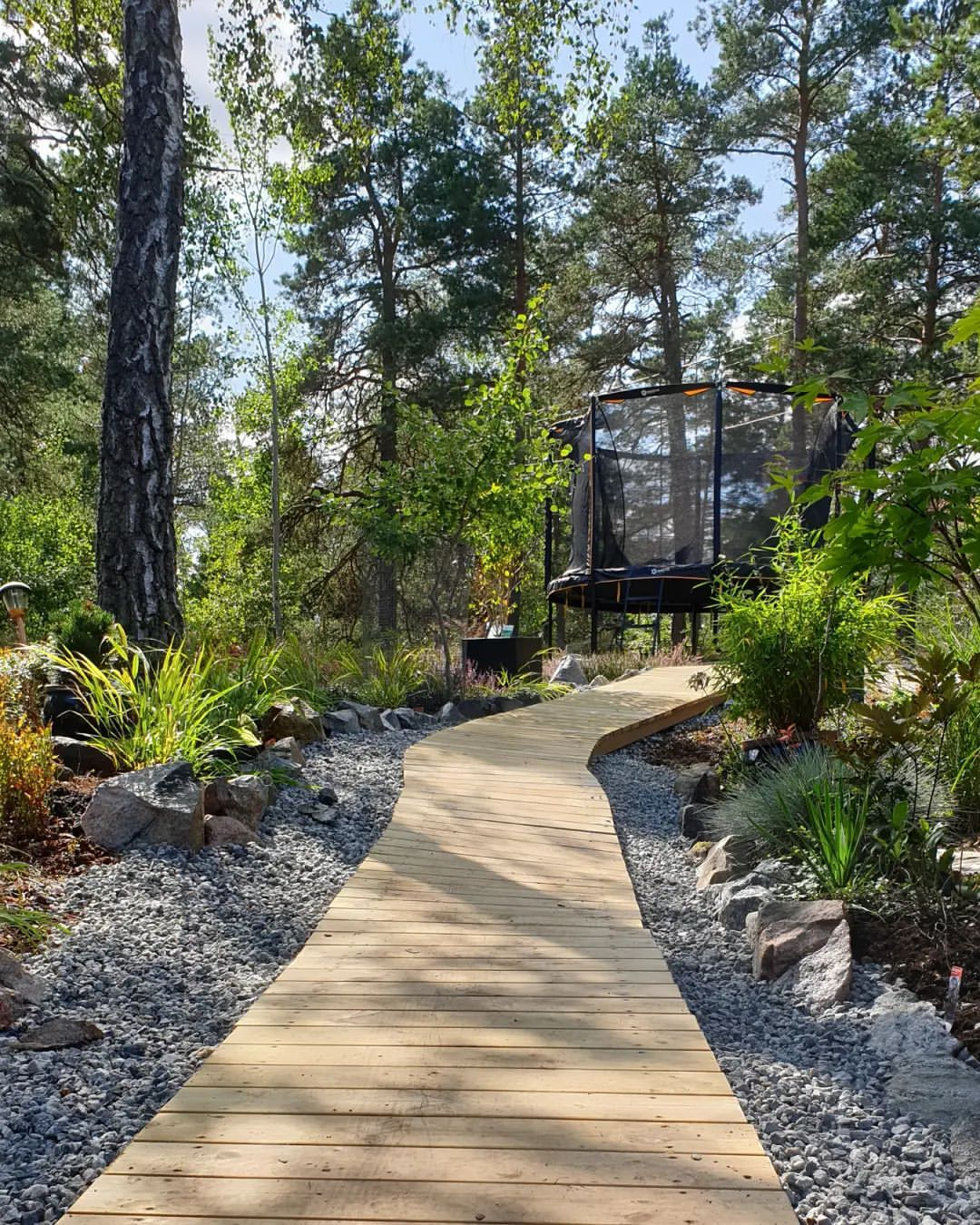
Using wood pallets for the garden pathway is a cost-effective and environmentally friendly option. The rustic look of the pallets adds a unique touch to the garden while also providing a stable surface for walking. Wood pathways from @ourgardenofdelight
Brick pathways
Bricks are versatile materials that can also be used for garden pathways. They come in a variety of colors and sizes, allowing for endless design possibilities. Additionally, bricks are durable and require minimal maintenance, making them a practical choice for outdoor landscaping projects.
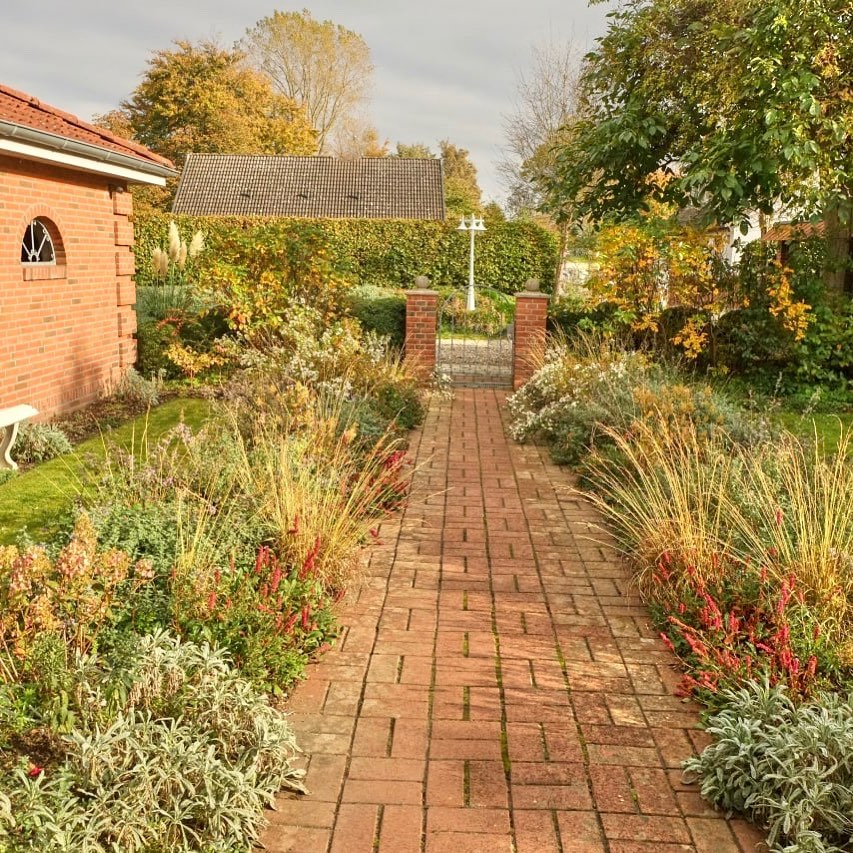
These red brick pathways give the campus a classic and timeless feel, blending seamlessly with the surroundings. The vibrant greenery that lines the walkways adds a pop of color and life to the surroundings. Brick pathways from @garten1001blumen
Concrete pathways
Next, concrete is the most common garden pathway material due to its durability and versatility. It can be easily molded into various shapes and designs to create a unique and functional pathway for any garden or outdoor space. Additionally, concrete pathways are low maintenance and can withstand heavy foot traffic without deteriorating. This makes them a practical choice for homeowners looking for a long-lasting and attractive garden pathway solution.
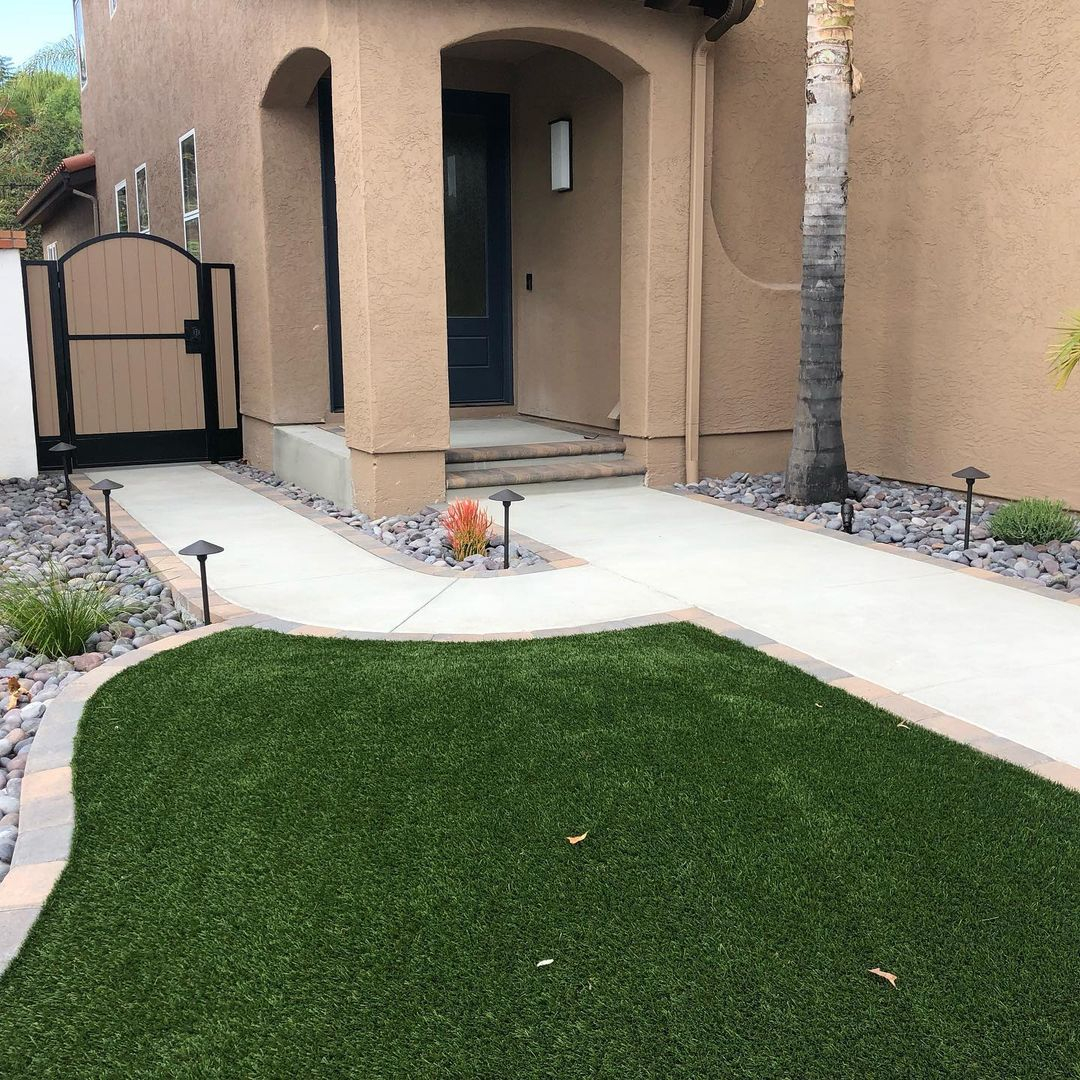
The clean and sleek design of these concrete paths creates a modern and sophisticated look that enhances the overall aesthetic of the space. The smooth finish also provides a safe and durable surface for walking. Concrete paths from @am_landscape_construction
Garden Path Sizes
In addition to garden pathway materials, you may pay attention to garden pathway sizes. Whether wide or narrow, the size of your garden pathway should be proportional to the size of your garden and the overall aesthetic you are trying to achieve. Consider how people will use the pathway and what type of plants or features will border it.
Wide paths
A typical wide pathway is around 4-6 feet wide, allowing for comfortable passage of two people side by side. This width is commonly seen in parks, gardens, and pedestrian walkways to accommodate foot traffic. It provides enough space for individuals to walk comfortably without feeling crowded or restricted.
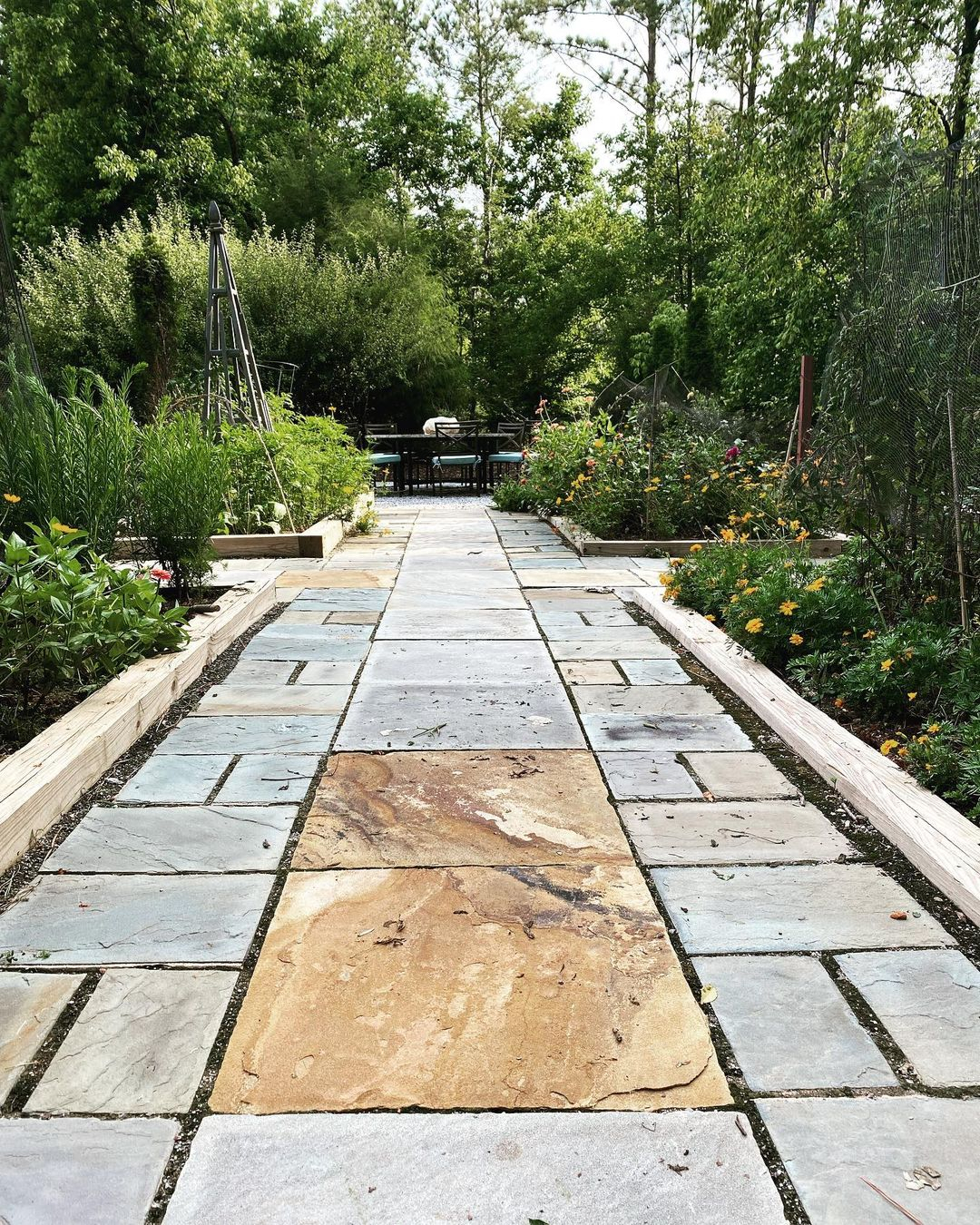
Designing a pathway of wide size allows for increased accessibility and ease of navigation for individuals. It also provides more aesthetically pleasing and functional outdoor space for users to enjoy. Wide paths from @lilywilddesigns
Narrow paths
Narrow pathways, on the other hand, may be better suited for smaller gardens or areas with limited space. These pathways are typically around 2-3 feet wide, allowing for single-file walking. Narrow pathways can create a more intimate and cozy atmosphere, perfect for smaller gatherings or quiet strolls.
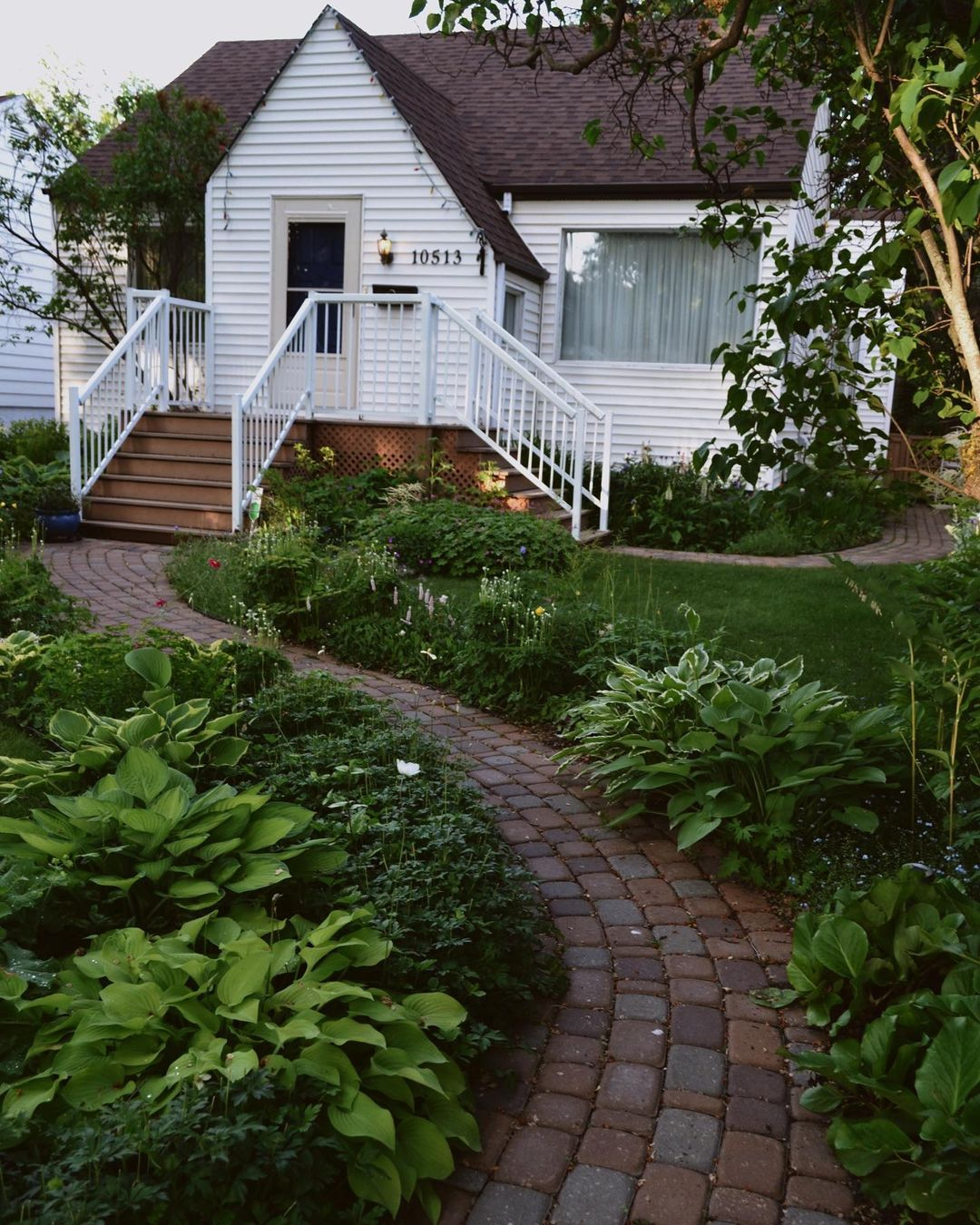
Even though it’s just a narrow pathway, the curving and landscaping around it create a sense of tranquility and peacefulness. The carefully chosen plants add to the overall ambiance, enhancing the beauty of the space. Narrow pathway from @girlfromplanet276
Garden Path Form
Another important thing in garden pathway landscaping is the form and design of the pathway. The shape and layout of the pathway can greatly impact the overall aesthetic of the garden. Such as curved, straight, or slicing paths.
Straight paths
Straight pathways offer a more structured and modern look. They can create a sense of order and organization in outdoor spaces, making them easier to navigate. Additionally, straight pathways can help highlight architectural features or focal points in a landscape design.
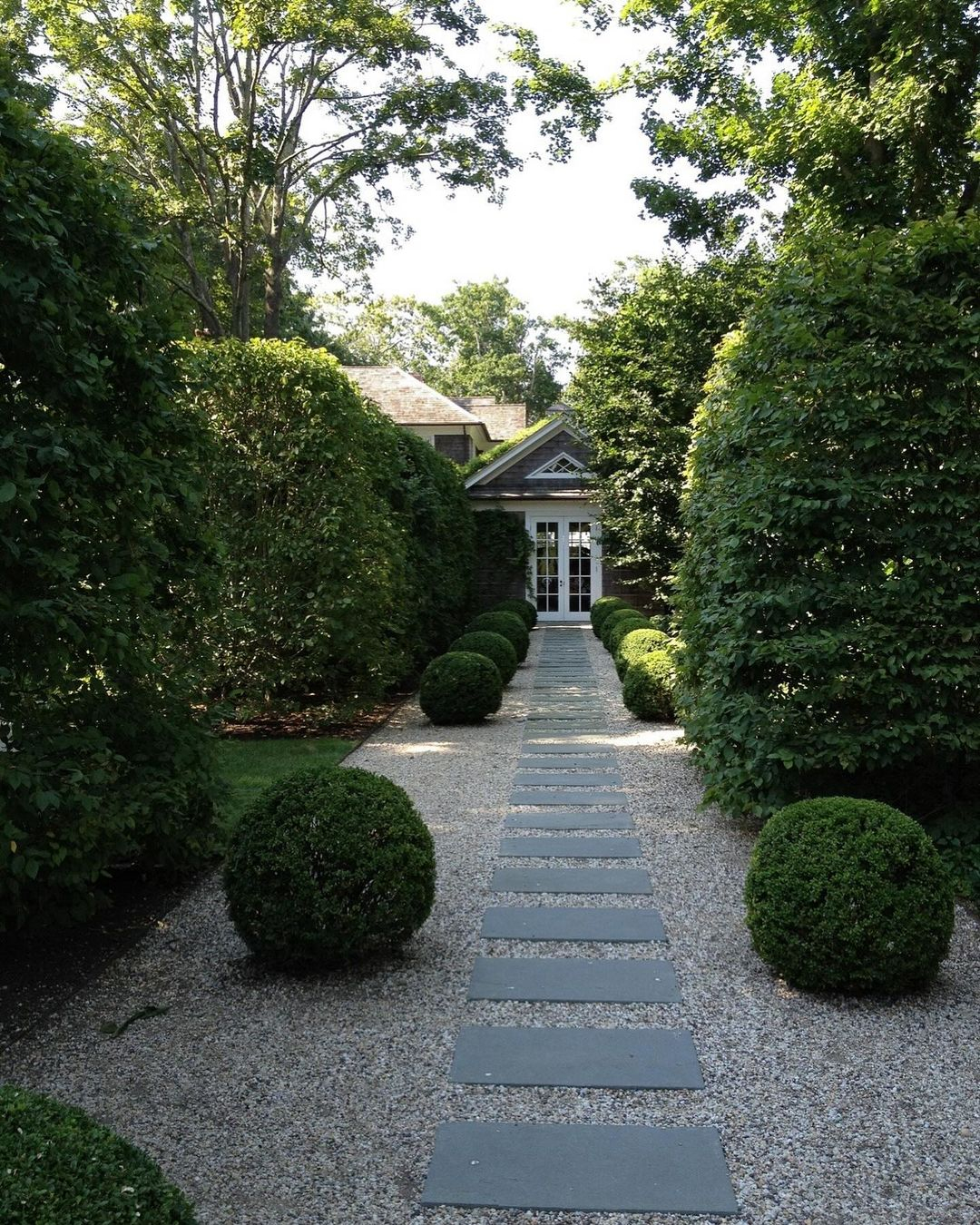
These straight paths lead to the house aesthetically with sleek lines and modern design elements that create a welcoming entrance. The minimalistic landscaping enhances the overall look, providing a clean and sophisticated approach to the front door. Straight paths from @aplaceofgardeninspiration
Curved paths
Curved pathways can create a more natural and inviting feel to a garden or outdoor space. The gentle curves can also help guide visitors through the space in a more relaxed and meandering way, encouraging exploration and discovery. Additionally, curved pathways can help soften the overall look of a garden by breaking up straight lines and adding visual interest.
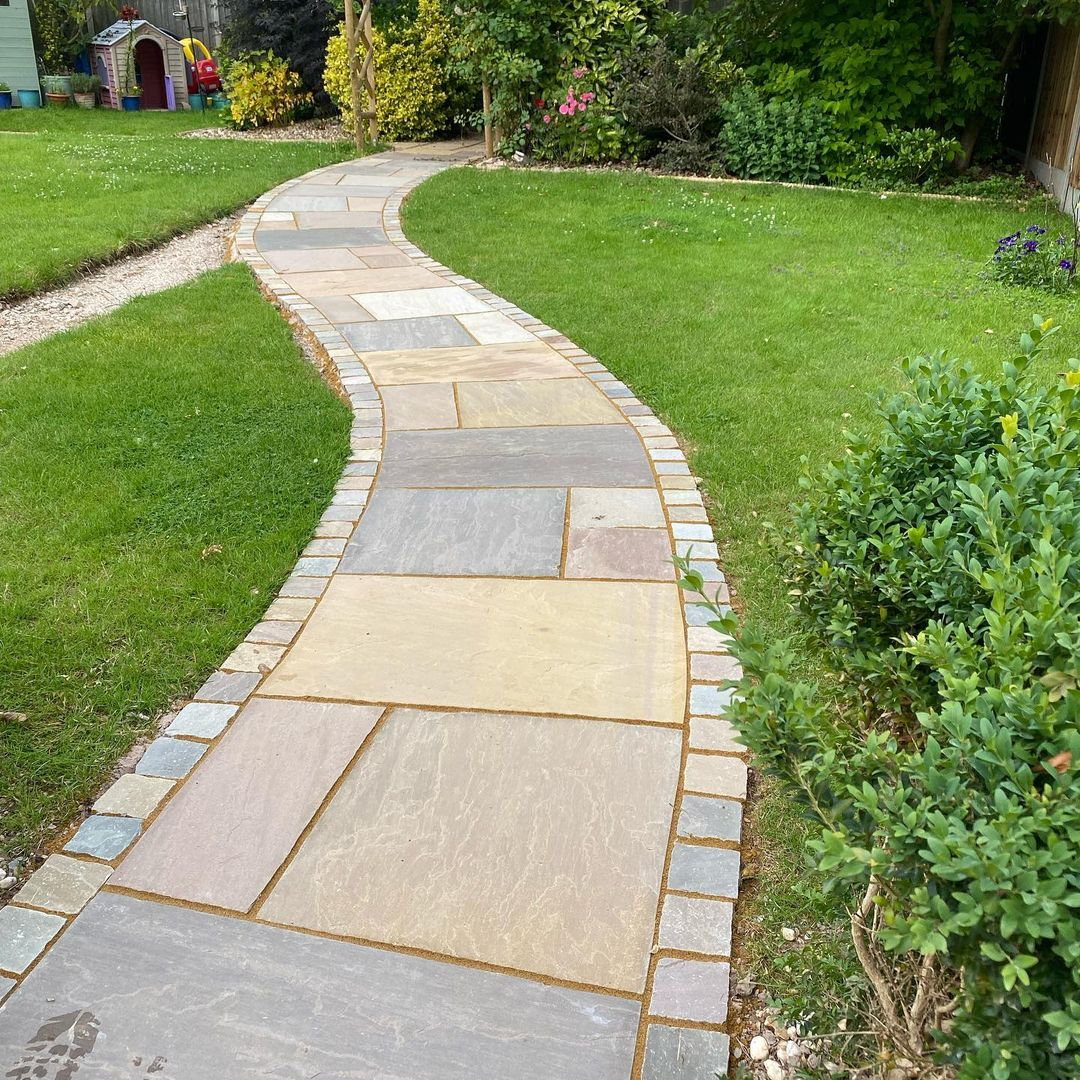
This curved path breaks down the monotony in this lawn and adds visual interest to the overall landscape. The gentle curve also creates a sense of movement and flow, inviting visitors to explore the space further. Curved pathway from @cjtcontracting
Lighting for Pathways
Garden pathway landscaping ideas can be enhanced with lighting. By strategically placing lights along the pathway, you can create a warm and inviting atmosphere for evening strolls or outdoor gatherings. Consider incorporating solar-powered lights along the pathway to illuminate the way at night, creating a magical ambiance in your garden. Additionally, using different types of lighting fixtures such as lanterns or string lights can add a touch of whimsy and personality to your outdoor space.
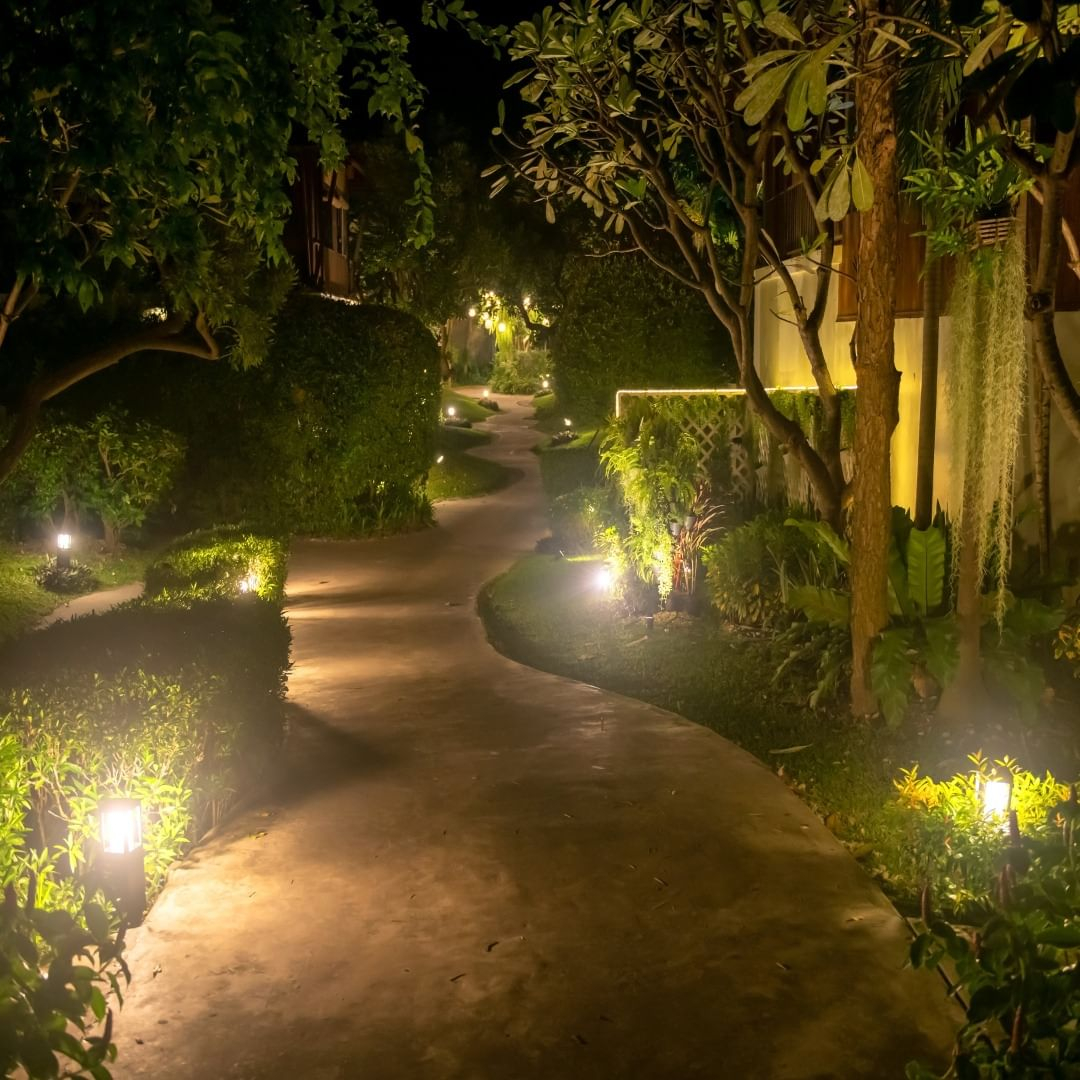
Enhancing the garden pathway landscaping with path lighting can create a beautiful and inviting atmosphere for evening strolls or outdoor gatherings. The soft glow of the lights can also improve safety by illuminating potential hazards along the pathway. Pathway lighting from @getlitlandscapelighting
Plant-lined Pathways
Incorporate colorful flowers, shrubs, and other plants along the pathway to enhance the overall aesthetic and create a welcoming atmosphere for visitors. Additionally, it will lessen erosion from foot traffic. Planting along pathways can also help improve air quality by absorbing pollutants and releasing oxygen into the atmosphere. By incorporating a variety of plant species, you can attract wildlife and create a more diverse ecosystem. This not only adds to the beauty of the area but also contributes to the overall health of the environment.
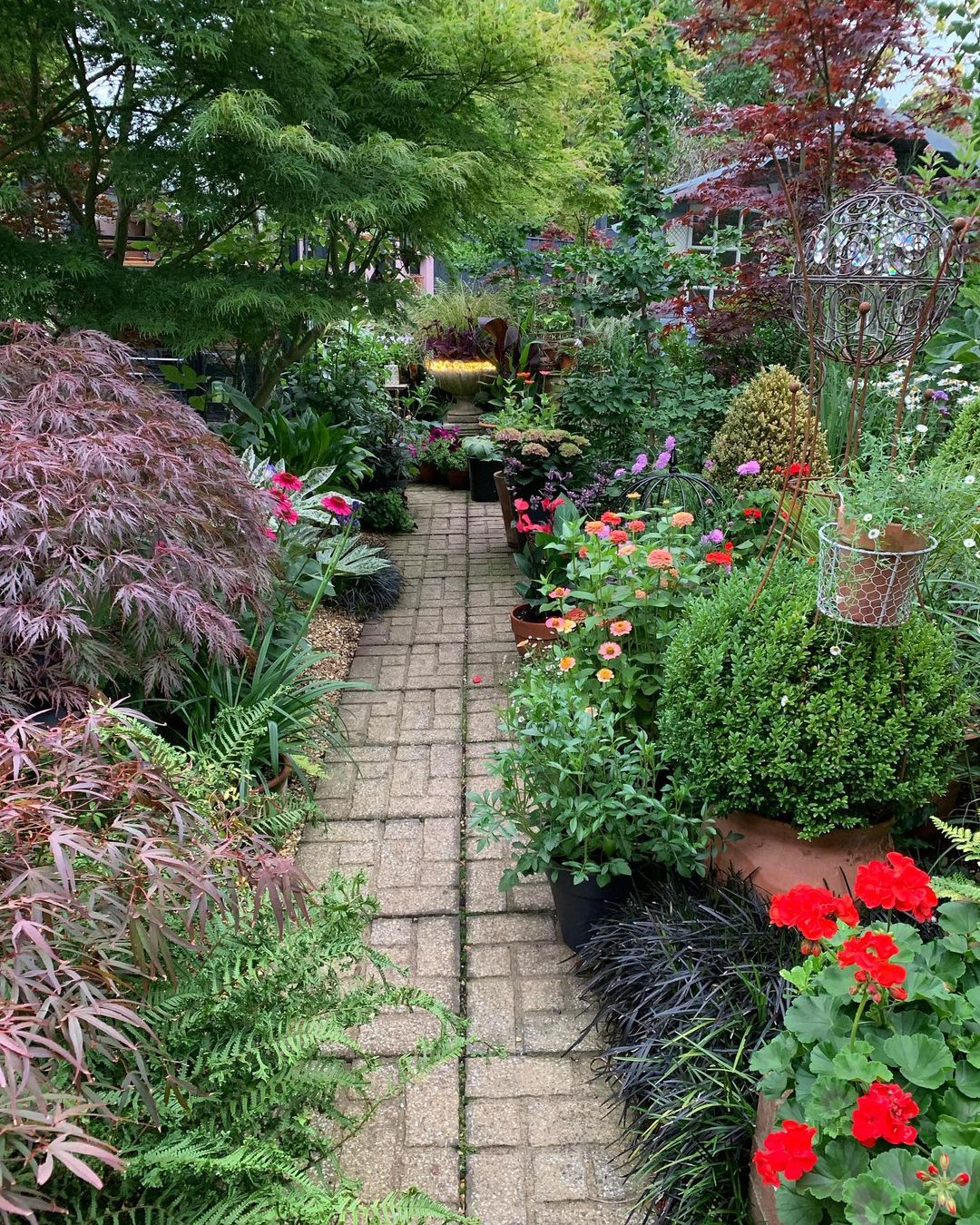
Placing potted plants alongside the pathway can add a touch of color and beauty to your outdoor space. It can also create a welcoming atmosphere for guests as they walk up to your home. Plant-lined pathways from @joanner3


